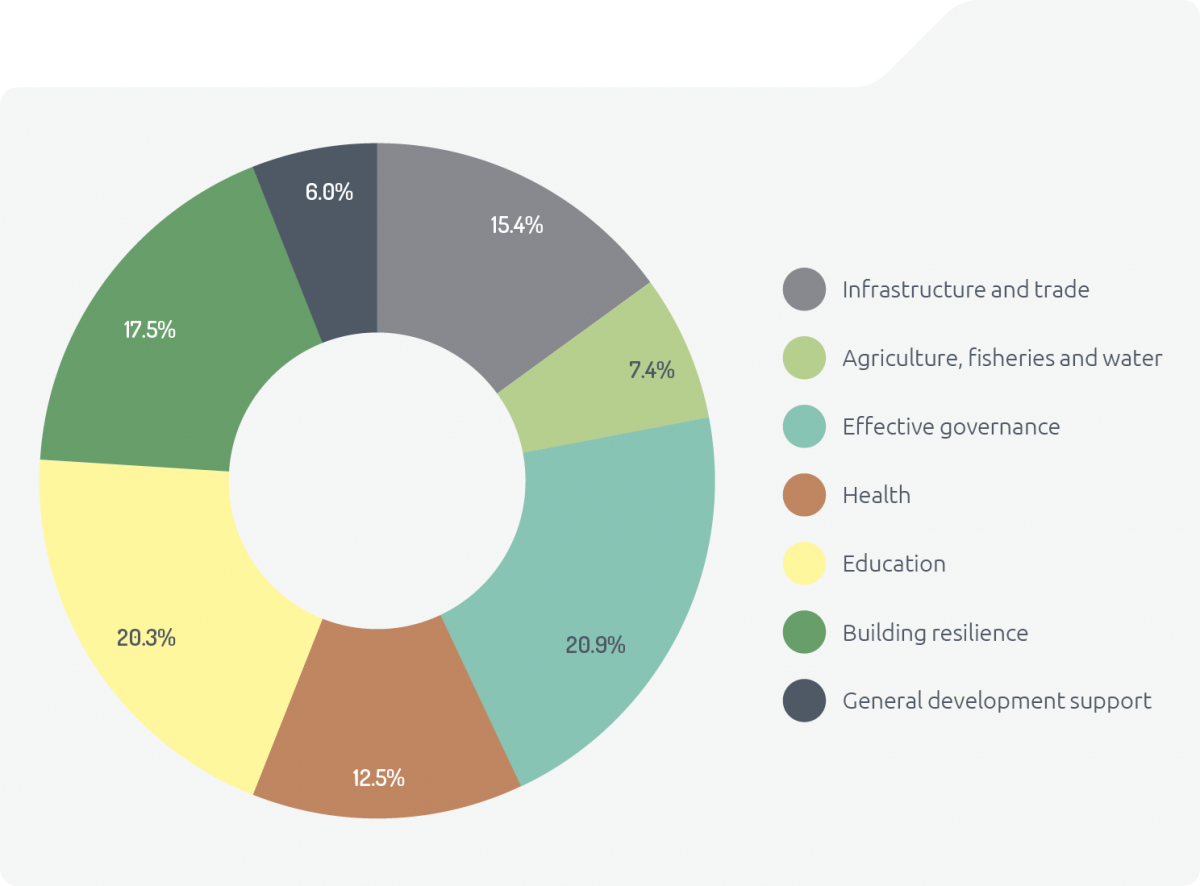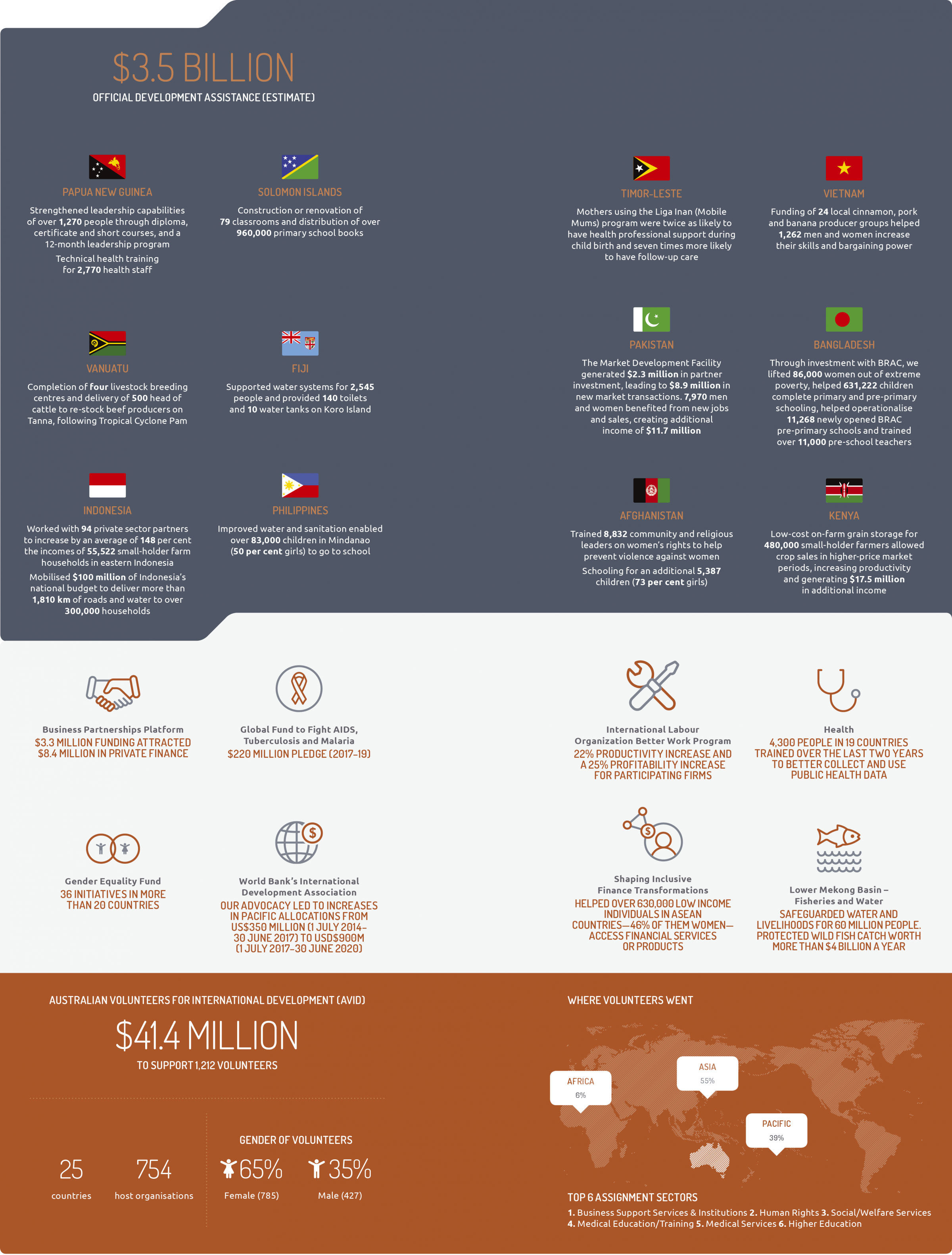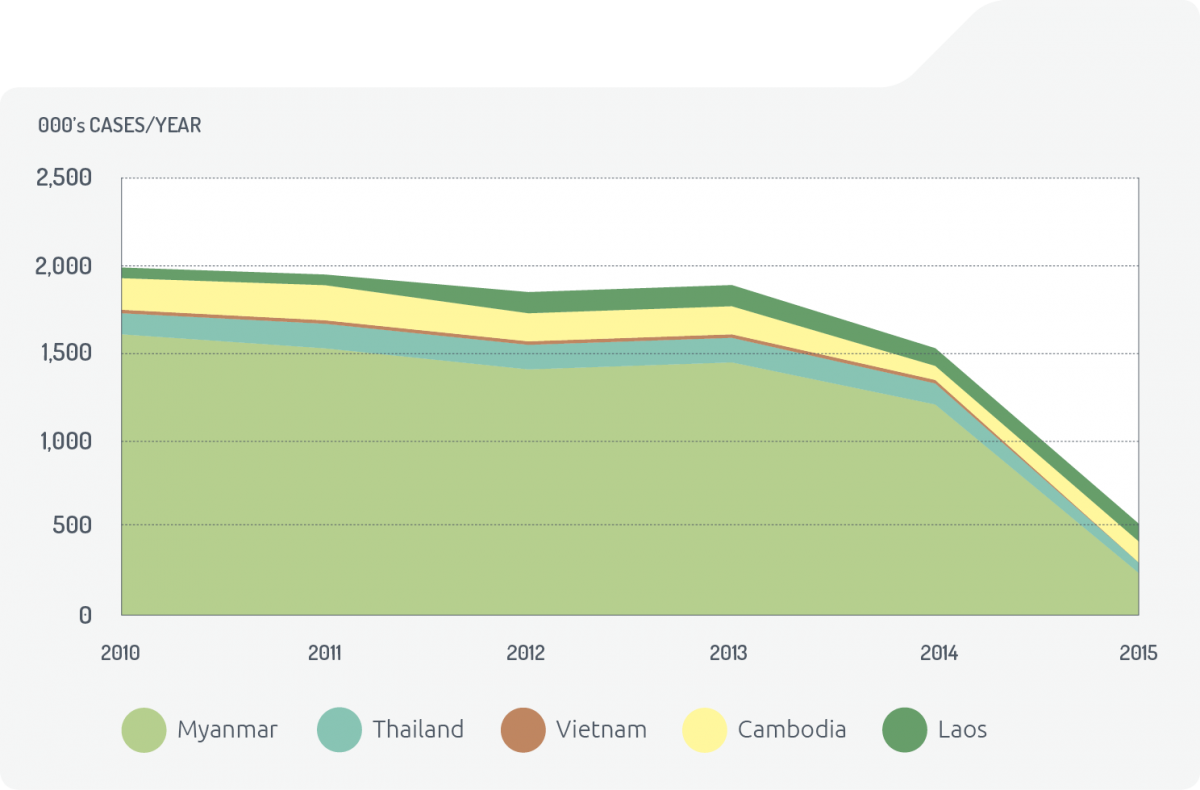Shaping development outcomes to advance Australia’s interests.
Addressing inequality in Indonesia
Addressing inequality in Indonesia
Indonesia has reached middle-income status and achieved substantial development progress but high levels of inequality persist—at least 100 million people live on US$2 or less per day.
Through an economic partnership, Australia assists Indonesia to use its own resources more effectively to generate, and distribute the benefits of, growth. The partnership also helps the Indonesian Government target public spending more efficiently.
In 2016 the Indonesian Government spent $6 billion subsidising the cost of household electricity for more than 70 per cent of private consumers. Wealthier households, which use more electricity, claimed a large proportion of the subsidy.
In 2017 our support enabled the Indonesian Government to begin targeting the subsidy to the poorest 40 per cent of households. The reported $1.6 billion in savings from this reform can now be used to build electricity infrastructure for poor and remote villages. Improving services and infrastructure in remote Indonesia helps address inequality between the country’s regions.
Improved targeting of the subsidy means vulnerable households are protected from economic shocks and Indonesia’s national power generator can operate more sustainably.
Funding for the subsidy reform was provided through our MAHKOTA program and channelled to Indonesia’s National Team for Accelerating Poverty Reduction (TNP2K). The team reports to the Vice President’s office and drives sensitive political reforms. Our engagement with this group at the highest level of government highlights Australia’s strong economic and development relationship with Indonesia.
A key factor enabling electricity subsidy reform was the availability of robust data on household poverty. Since 2010 Australian funding has helped maintain Indonesia’s poverty targeting database. In September 2016 officials presented evidence to the Indonesian Parliament testifying to the data validity, giving legislators confidence in the proposed reforms. TNP2K staff then worked with Indonesia’s Ministry for Energy and Natural Resources to match state electricity company customer information to the database and remove access to subsidised electricity by wealthier households.
Expanding opportunities for Indonesia’s poorest families, particularly those living in remote regions, is necessary if they are to move into the higher consuming middle class, which in turn is important for sustaining economic growth. A more prosperous Indonesia means greater trade and investment opportunities for Australia. In other parts of the world, public perceptions of disadvantage have led to social unrest and dissatisfaction with the state. Our support for Indonesian policy makers as they work to address inequality helps maintain the stability and social cohesion of one of our closest neighbours.





